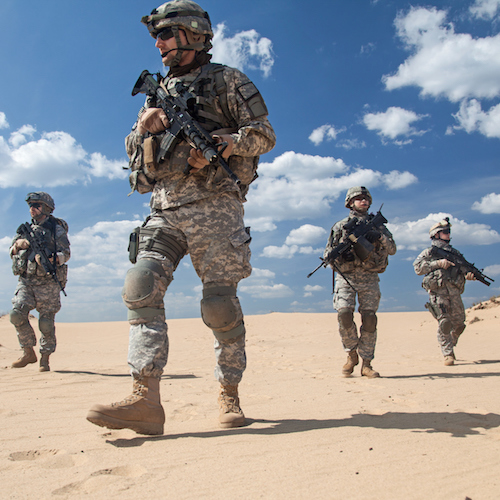
The U.S. military spent $178 billion on research, development, and procurement in the 2016 fiscal year. While most funds invested in new military capabilities are spent on major weapons programs, a number of military inventions over the years also had civilian applications.
In fact, some of the most widely used commercial products today were originally developed for the purpose of defending the country. 24/7 Wall St. identified 15 such products.
The federal government has always been the most powerful and resource-rich entity in the United States. As a result, the military has had the means to make incredibly large investments, either through its own research agencies or through contracts with private companies. The Defense Advanced Research Projects Agency (DARPA), which was involved in major innovations such as the internet, is behind two products on this list: GPS and the Aspen Movie Map, a precursor to Google’s Street View.
The private and public spheres are closely interwoven in what is known as the military-industrial complex.
Click here to see the 15 commercial products invented by the military.
Click here to see our detailed findings and methodology.

1. Drones
> Date invented: 1863
The origin of unmanned aerial vehicles (UAV) dates back to the middle of the U.S. Civil War in 1863, when New York City inventor Charles Perley patented a hot air balloon that functioned as an unmanned aerial bomber. The balloons may have been used by both Union and Confederate forces but were unreliable and extremely dangerous for users. UAVs would not be used again by the military until the development of radio control at the turn of the 20th century.
The United States has been increasingly using UAVs — also known as drones — in military operations in recent years. More than 10,000 U.S. military flight drones are used for surveillance and combat purposes. Drones are now used in a wide range of commercial applications as well, including crop growth monitoring and watering, surveying, filmmaking, law enforcement, and personal enjoyment by hobbyists.
[in-text-ad]

2. Undershirts
> Date invented: 1904
People have been wearing undergarments of one kind or another for thousands of years. However, it was not until they were made part of the official Navy uniform in 1905 that cotton, T-shaped undershirts were widely produced or worn. In the previous year, the Cooper Underwear Company marketed a cotton pullover to male bachelors with no sewing skills. The pullover T-shirt served as a simpler alternative to higher-maintenance traditional button up shirts. As for a number of other products on this list, the convenience and practicality of these garments appealed immediately to the military. In the case of undershirts, their use in the Navy popularized the term crewneck shirt.

3. Instant coffee
> Date invented: 1910
The roots of instant coffee may be traced back to 1771 in Britain, although some form of the coffee is claimed to have emerged in a number of other countries at varying periods. In the United States, instant coffee was first mass produced in 1910 and was received poorly by ordinary consumers. The military, however, greatly appreciated the convenience and versatility of instant coffee. According to Nestle, the entire production of its U.S. instant coffee plant, around 1 million cases, was reserved for the military in a single year during World War II.
According to market research firm Euromonitor International, today nearly half of the world prefers instant coffee. On the other hand, instant coffee accounts for a relatively small share of the U.S. coffee market.

4. Feminine hygiene products
> Date invented: 1914
The earliest evidence of tampon-like feminine hygiene products dates back to Europe in the 18th and 19th centuries, but the modern tampon has its roots in World War I. Until the 1920s, there was no ubiquitous form of menstrual absorption products, and many women relied on homemade products. During World War I, a cheap alternative padding was developed when a cotton supply shortage increased the demand for other forms of cheap bandaging. Under a government contract, Kimberly-Clark Co. was able to manufacture cellucotton, an absorbent material made from wood pulp. The material caught the attention of Red Cross nurses, who began to utilize cellucotton wads during menstruation. After the war, Kimberly-Clark repurposed cellucotton to make sanitary napkins and Kotex pads. While today it is estimated that 70% of women of menstruating age use tampons, many drug and department stores initially refused to carry the Kotex pads due to sensitivity to the issue.
[in-text-ad-2]

5. Aviator sunglasses
> Date invented: 1930s
Today an iconic fashion item, the characteristic shape and dark lenses of aviator sunglasses were once necessary protection for test pilots subject to the dangerously bright sunlight of the upper atmosphere. In the 1930s, optics manufacturer Bausch & Lomb developed aviator goggles under the direction of the U.S. Army Air Corps. Bausch & Lomb rebranded the sunglasses in 1937 as Ray-Ban — as they banish the sun’s rays — and sold them to the civilian population. By World War II, aviators were a standard accessory for U.S. soldiers. The glasses were further popularized by Hollywood stars in the 1950s, and the cultural vanguard continued to wear them throughout the decades.

6. Jeep
> Date invented: 1940
In World War II, the U.S. Army had a need for a light reconnaissance vehicle and asked automakers to develop prototypes and submit proposals. The government chose the design of American Bantam car company — a four-wheel drive vehicle with a top speed of 65 mph. The automobile’s namesake, General Purpose, was abbreviated to G.P. and eventually nicknamed jeep. The jeep proved an invaluable contribution to the U.S. military effort, with then General Dwight D. Eisenhower stating that “America could not have won World War II without it.” The company manufactured more than 600,000 jeeps during the war, and later sold the postwar surplus to the public rather cheaply. Today, Fiat Chrysler Automobiles sells Jeeps. While the military use of jeeps has dwindled since World War II, U.S. sales of the Jeep Wrangler – which bears many of the design characteristics of the original – exceeded 200,000 units in 2016.
[in-text-ad]

7. Aerosol bug spray
> Date invented: 1941
In World War II, soldiers stationed in the South Pacific needed an easy way to kill mosquitos, which could potentially carry malaria. In a partnership with the Department of Defense, two scientists with the U.S. Department of Agriculture, Lyle Goodhue and William Sullivan, took on the task of developing a way to deliver insecticide as a fine mist. The first aerosol can was patented in 1941 and nicknamed “bug bomb” by soldiers. The partnership between the USDA and the DoD has yielded other life-saving innovations, including the use of DDT in controlling typhus. In 1949, engineer and veteran Robert Abplanalp patented a cheaper plastic aerosol valve meant for commercial mass production. He started the Precision Valve Corporation to market the invention and turned a profit almost immediately. The aerosol can has since been refined and is now less harmful to the environment.

8. Duct tape
> Date invented: 1942
During World War II, the U.S. military was in need of a durable adhesive tape that could maintain its bond under harsh field conditions. The military asked Johnson & Johnson Co. to develop the idea, and initially called it duck tape for its waterproof nature. Civilians began to utilize the product heavily during the postwar housing boom, when it was used to seal central air and heating systems. Duck tape was used in ductwork so much that it was renamed and recolored to match the silver metallic color of HVAC systems. Known for its versatile uses, duct tape has recently taken on another life as material used in a variety of personal products, including wallets, bags, and phone cases. Multiple companies, including Scotch and Duck Brand, now manufacture duct tape.
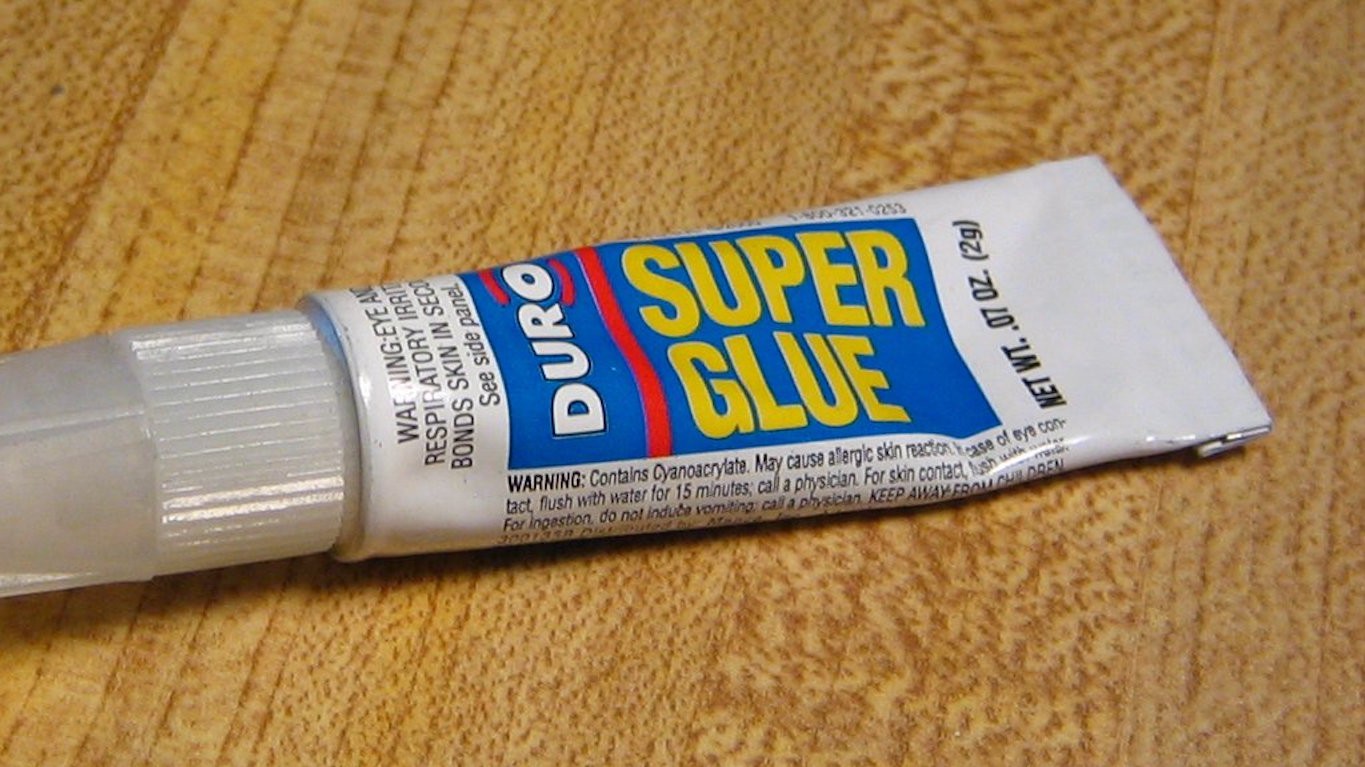
9. Super glue
> Date invented: 1942
Eastman Kodak was one of many companies that contributed to the war effort during World War II. In 1942, while testing a variety of compounds for use in a plastic rifle sight, Dr. Harry Coover a company chemist, inadvertently created cyanoacrylate, a compound later marketed as Super Glue. The material was incredibly durable but was dismissed for being too sticky. When a colleague was testing cyanoacrylate nine years later, Dr. Coover had another encounter with the material. As the colleague complained the compound ruined his equipment, Coover realized its commercial potential. Super Glue was first sold as a commercial product in 1958. The product was eventually adopted by military surgeons during the Vietnam War, who would spray it over wounds to stop bleeding instantly.
[in-text-ad-2]
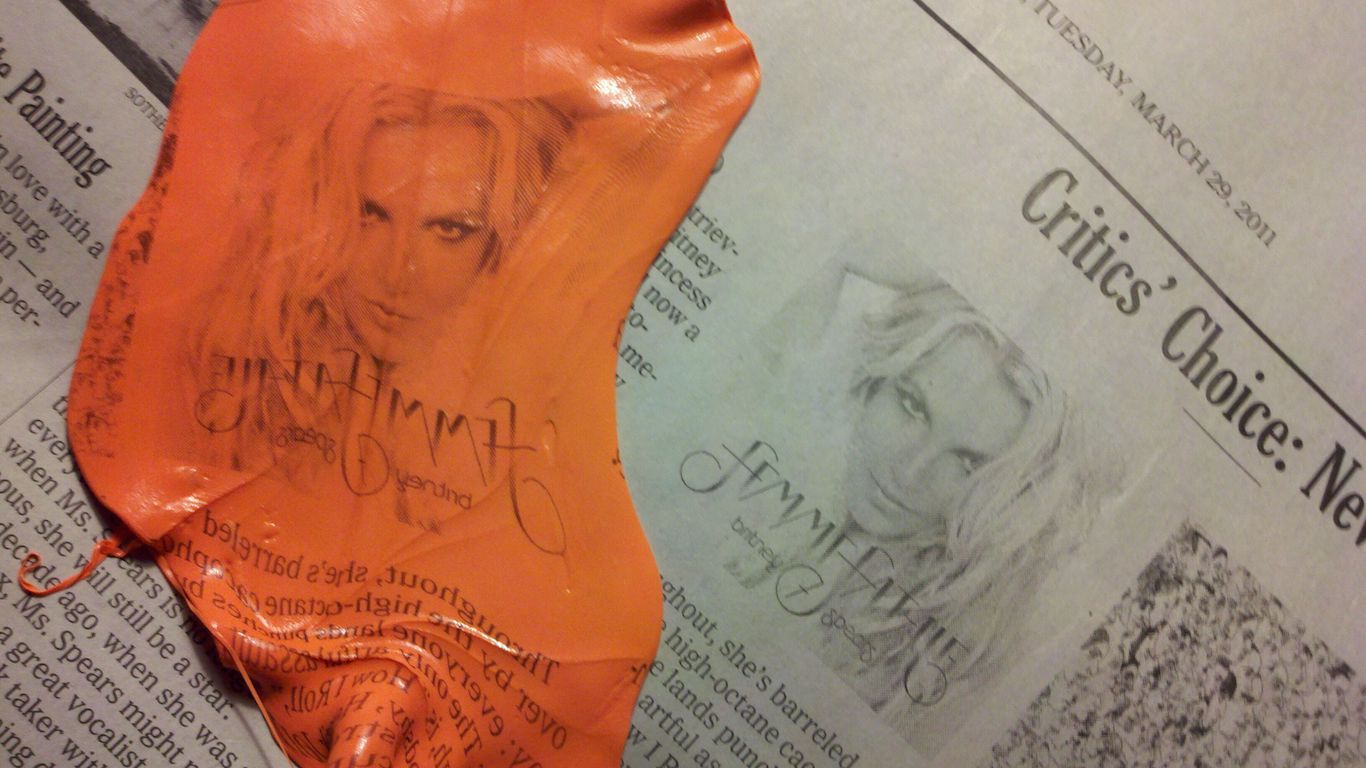
10. Silly Putty
> Date invented: 1943
In the 1940s, the United States needed a new source of rubber after Japan had invaded Malaysia and cut off U.S. supply of the material. The War Production Board asked the nation’s industries for help. A chemist at General Electric came up with a stretchy, bouncy material made of boric acid and silicone oil. While highly unique, the material had no military application. The material caught on, however, after GE executives began showing it off at cocktail parties and one interested party, adman Peter Hodgson, bought the manufacturing rights and changed the name to Silly Putty. The product, packaged in small plastic eggs as a toy, began selling in 1950 and immediately caught on. In 1968, astronauts on the Apollo 8 mission used Silly Putty to help keep their instruments in place. Since 1950, the company has sold more than 350 million Silly Putty eggs.

11. Frozen juice concentrate
> Date invented: 1945
In 1943, the USDA and the Florida Citrus Commission set to work on the development of a frozen juice concentrate that could be sent to U.S. soldiers overseas. At the time of their collaboration, orange juice that had been frozen and thawed would turn an unappetizing brown color. The thawed juice also developed a bitter taste, prompting soldiers to nickname the beverage “battery acid.” Eventually, USDA scientists discovered that adding a dash of fresh orange juice to the concentrate before freezing it preserved its flavor. The process was patented in 1945 but made available to any public or private entity that wished to use it. Minute Maid began selling frozen juice products commercially in 1946. In 2014, orange juice was the most commonly consumed fruit product in the United States, with the average citizen drinking 31.3 pounds of juice annually.
[in-text-ad]

12. Microwave oven
> Date invented: 1946
Microwave technology was originally used as a radar to help locate enemies during World War II. The ability of microwaves to cook food was discovered by accident. While conducting research on microwave radar technology, an engineer at defense contractor Raytheon Company noticed that a candy bar in his pocket had melted. This led to the realization that microwave equipment could be repurposed to heat and cook foods. Later that year, Raytheon Company filed the first patent for a microwave oven. The first commercial microwave was manufactured in 1954 and was about the size of a refrigerator. Today, more than nine in 10 U.S. households own a microwave oven. The technology is one of many military inventions that have shaped the American kitchen and kitchens worldwide.

13. GPS
> Date invented: 1960
Humans have been navigating the land and the sea for thousands of years, using more and more advanced methods to determine their position. In the 1960s, the DoD developed the original Global Positioning System (GPS). The idea was to use satellites to determine a user’s position on Earth by measuring his or her distance from three peripheral satellites in a process known as trilateration. The system would require 24 satellites. While the system became fully operational in March 1994, it captured the public’s interest long before then. President Ronald Reagan first ensured civil applications of GPS in 1983, after an incident where a Korean airliner that strayed off course and was shot down by the Soviet Union demonstrated the need for better navigational technology. The public received a comprehensive preview of the technology during the Gulf War, when soldiers used GPS to navigate across deserts and target enemies with an accuracy that was previously impossible. Today, GPS technology is used in consumer products such as cars and phones, as well as applications like earthquake research and geocaching.
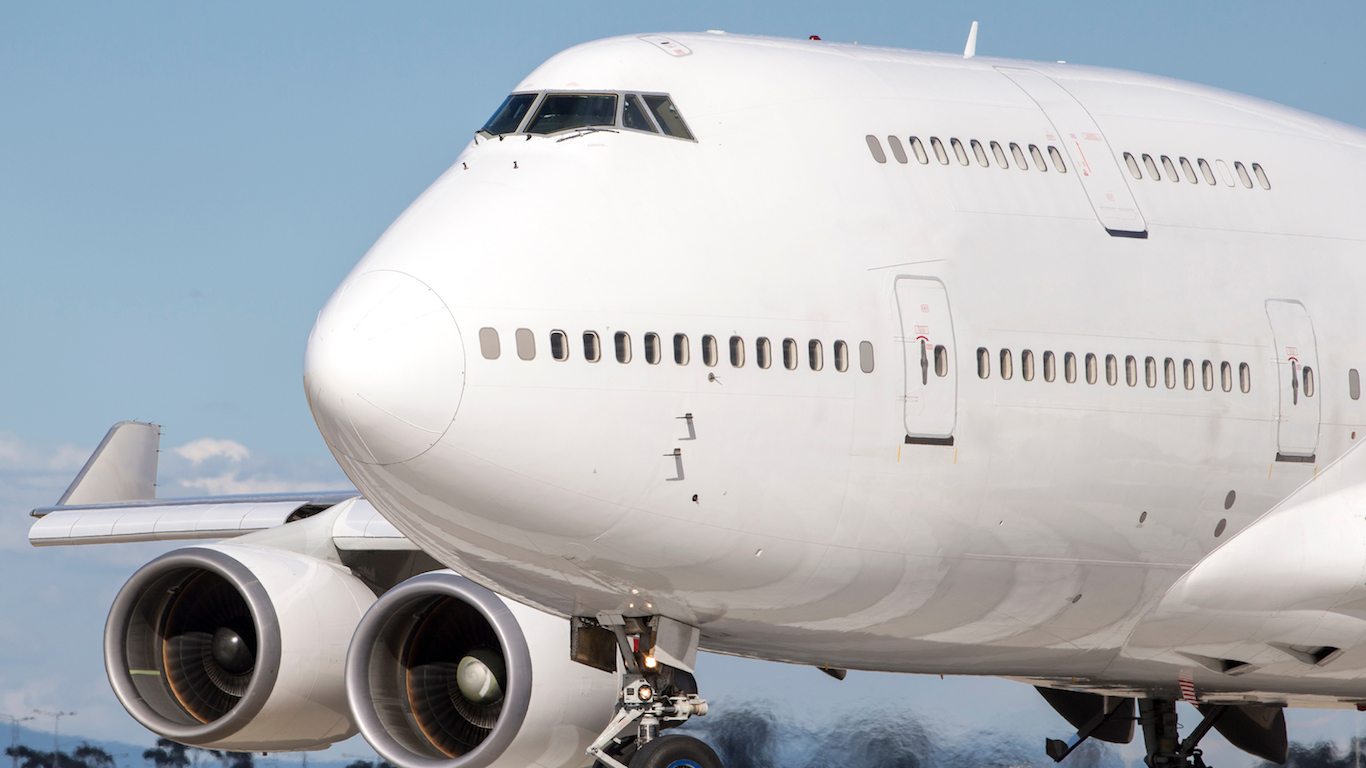
14. Boeing 747
> Date invented: 1968
Boeing is one of the world’s largest weapons manufacturers. Unlike many other defense contractors, the aerospace behemoth also has a major presence in non-military markets. The Boeing 747 commercial airliner is perhaps the company’s most iconic product. Like most commercial jets in use today, the 747’s design is based on the Boeing 707, which can be traced to the Boeing 367-80. This model, nicknamed the Dash 80, was developed in secrecy by Boeing and unveiled in 1954. The plane was originally meant to test the long-range jet engine technology and was intended to be sold as a military tanker transport. That year, the U.S. Air Force ordered 29 of the jets, called KC-135.
Today, versions of the 747 are used by most major commercial airliners as well as by the military, including a version used as Air Force One.
[in-text-ad-2]
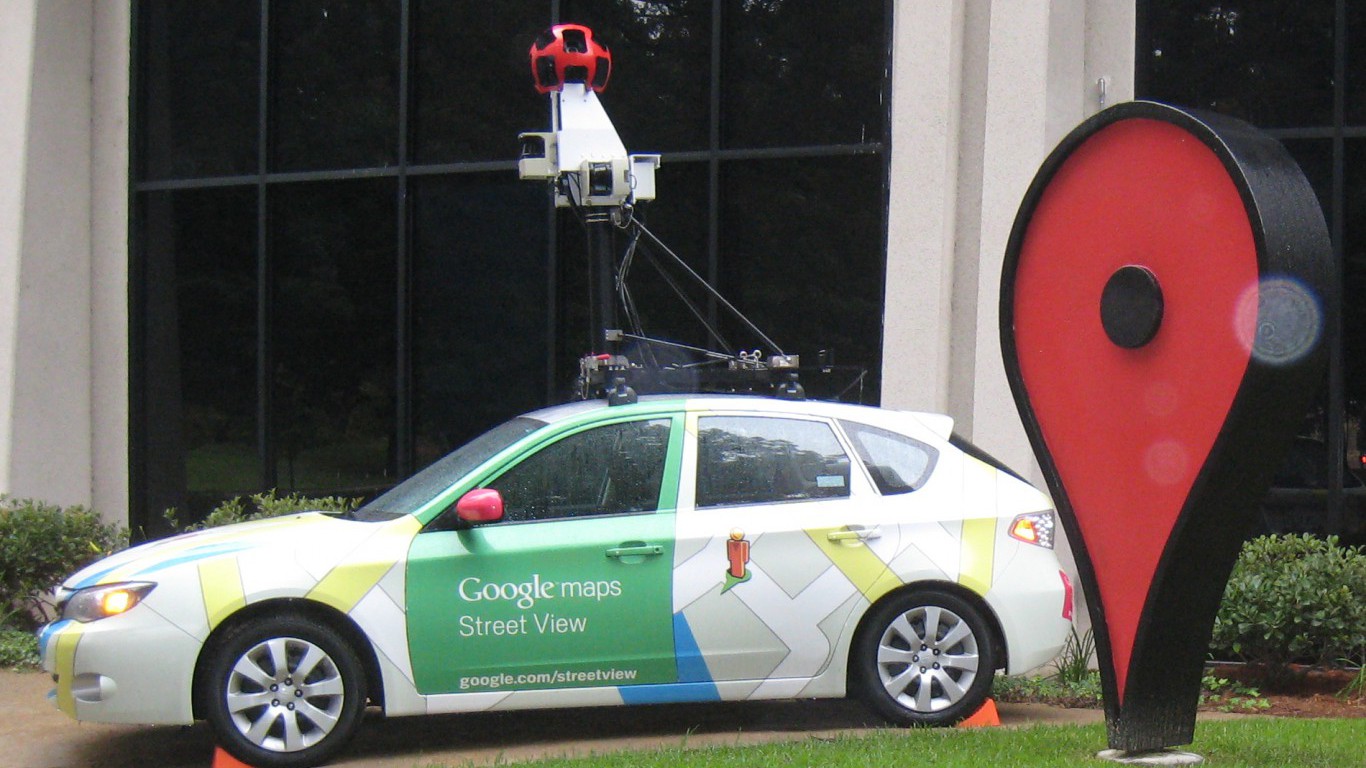
15. Google Street View
> Date invented: 1978
The technological precursors of Google’s Street View can be traced back to 1978, when a group of Massachusetts Institute of Technology researchers mapped Aspen, Colorado with 16mm stop-frame cameras. The project, called the Aspen Movie Map, was funded by DARPA’s Cybernetics Technology Office. The military was interested in the mapping to improve training simulations. The researchers used cameras mounted on cars not unlike the vehicles Google uses to create Street View.
Unlike most of the products on this list, the development of Google Street View is not directly a product of its precursor, Aspen Movie Map. Google asserts that Street View originated in a project at Stanford University. By now, much of the planet has been photographed and mapped. Not only the military uses Street View to simulate combat situations and for other applications, but the public as well. Today, people can experience the world without leaving their home.
Detailed Findings and Methodology:
The military contracted out or sold many of these inventions to private companies. One exception is the modern GPS network. It was developed in the 1970s by Department of Defense (DoD) researchers and was built over the following two decades. The technology, initially designed as a guidance and tracking system for fighter planes, boats, and missiles, is today used in many civilian applications from personal to commercial aircraft navigation systems.
In other cases, the military became the primary consumer of a product shortly after it was invented by a private company. The government did not ask Boeing to develop the model 367-80 airplane, the prototype for the 747, but as soon as the plane demonstrated its utility the military purchased 29 of them. Similarly, the Jeep was designed by a company called American Bantam. The all-terrain scout vehicle was widely used by the military in World War II and eventually became very popular among ordinary consumers.
Many of these products appealed to civilians for the same reasons they appealed to soldiers. American consumers value convenience, affordability, and ease of use — qualities essential in a military setting. Instant coffee, for example, gained popularity during World War I, when it was likely the only option for soldiers living in trenches. Today, instant coffee is a popular choice for civilians who prefer its price and convenience over fresh coffee options.
Further, there is often an aesthetic appeal to military products, and many were popularized by military use. The rugged soldier aesthetic of items such as aviator sunglasses and Jeeps were largely behind the success of these products.
The commercial use of these products was often completely different from their intended military function. What eventually became feminine hygiene products under the Kotex brand was originally medical gauze developed for the military during World War I. Silly Putty was invented as a possible substitute for rubber. While it failed in this regard, it became a popular toy.
Unlike years past, these days the flow of innovations is increasingly reversed — from civilian to military application. The size of the consumer electronics market has far exceeded the military’s new technology budget, and the capacity for innovation in the private sector has likely surpassed the public sector.
While the military dedicated $12.3 billion to research on new science and technology in 2016, the three largest corporate spenders — Samsung, Intel, and Apple — spent a combined $32.9 billion on consumer electronics R&D that year. As private companies outspend and out-innovate the federal government, products first marketed to Americans are continuously being repurposed for the military.
24/7 Wall St. reviewed products that were developed for military use either by the military or by contractors and became a popular civilian products. We also considered products that originated in the private sector but were popularized as a result of military use. We excluded products where the military or contractors only played a part in the development of the product, as was the case with the computer and the internet. The products are ordered by invention dates of their precursors.
Are You Ahead, or Behind on Retirement?
If you’re one of the over 4 Million Americans set to retire this year, you may want to pay attention. Many people have worked their whole lives preparing to retire without ever knowing the answer to the most important question: am I ahead, or behind on my goals?
Don’t make the same mistake. It’s an easy question to answer. A quick conversation with a financial advisor can help you unpack your savings, spending, and goals for your money. With Zoe Financial’s free matching tool, you can connect with trusted financial advisors in minutes.
Why wait? Click here to get started today!
Thank you for reading! Have some feedback for us?
Contact the 24/7 Wall St. editorial team.
 24/7 Wall St.
24/7 Wall St.



